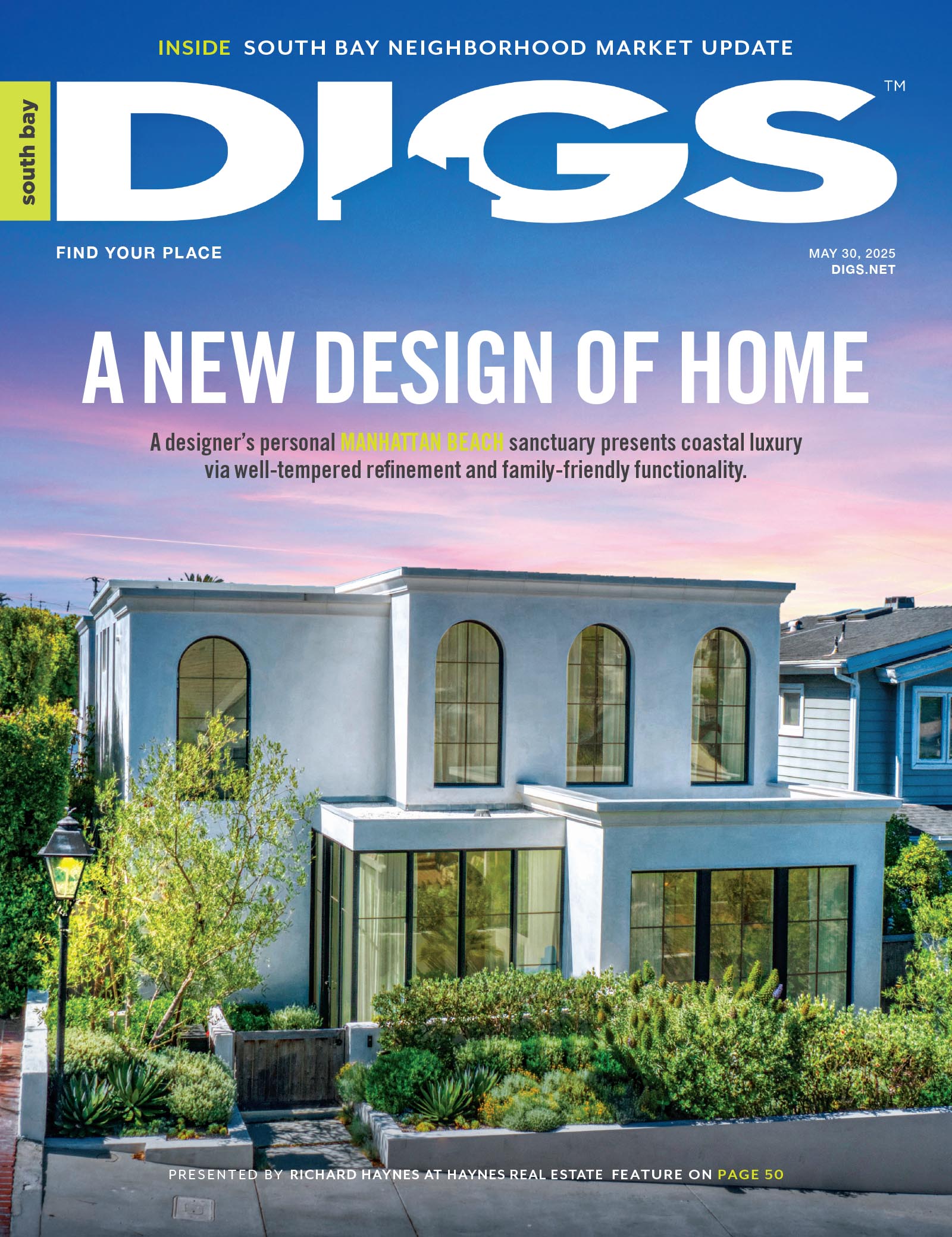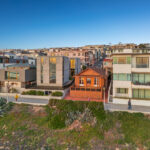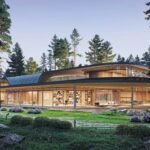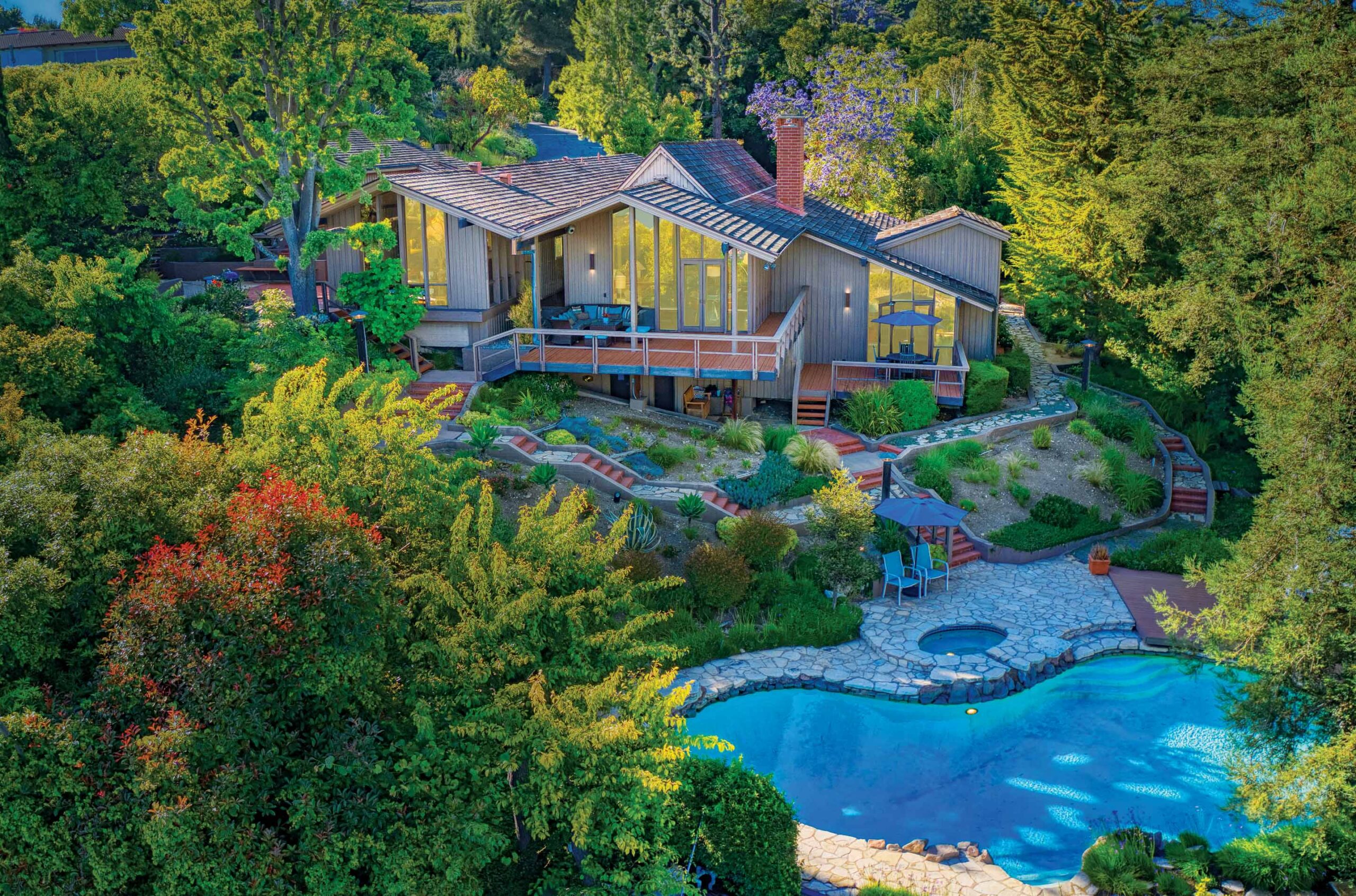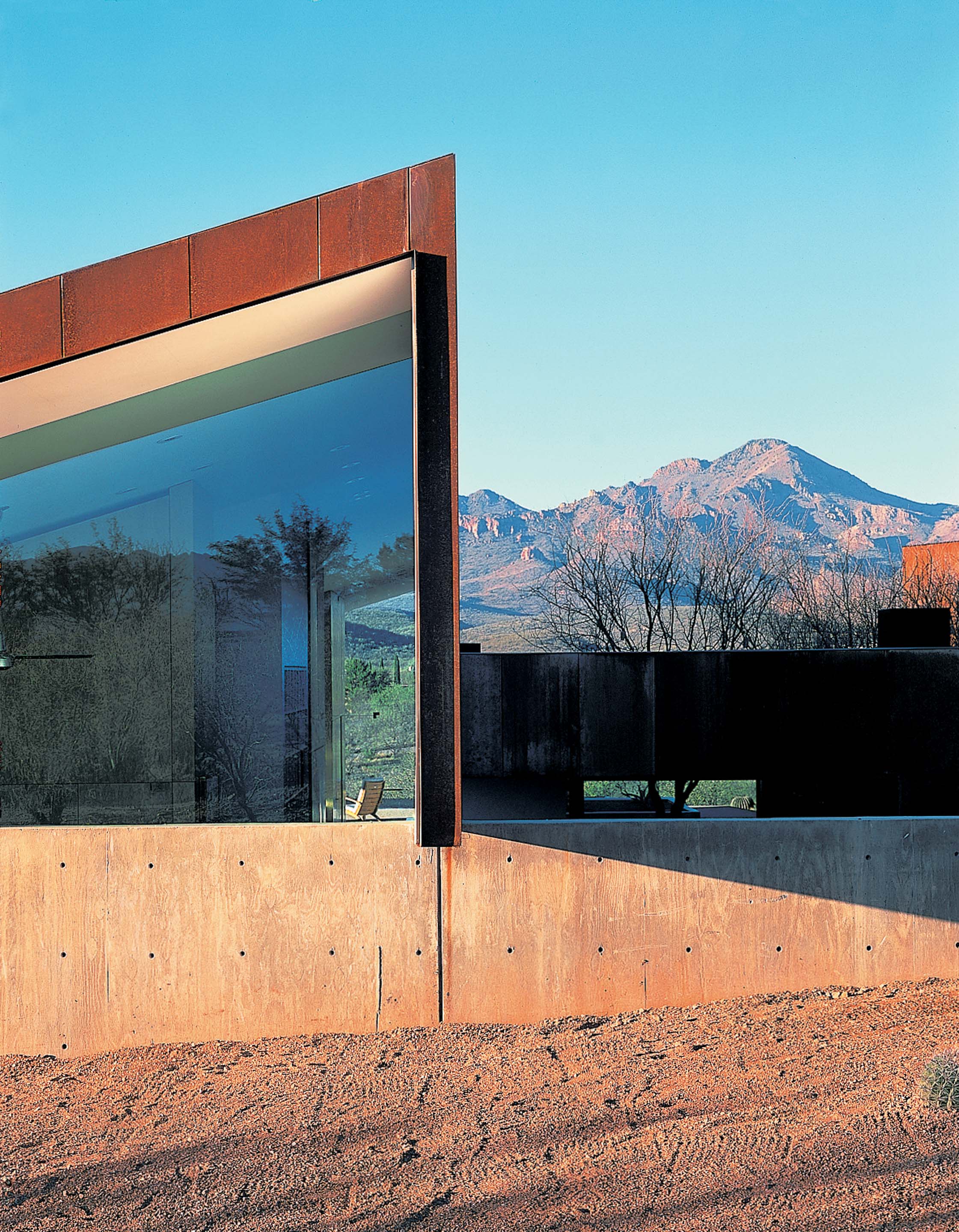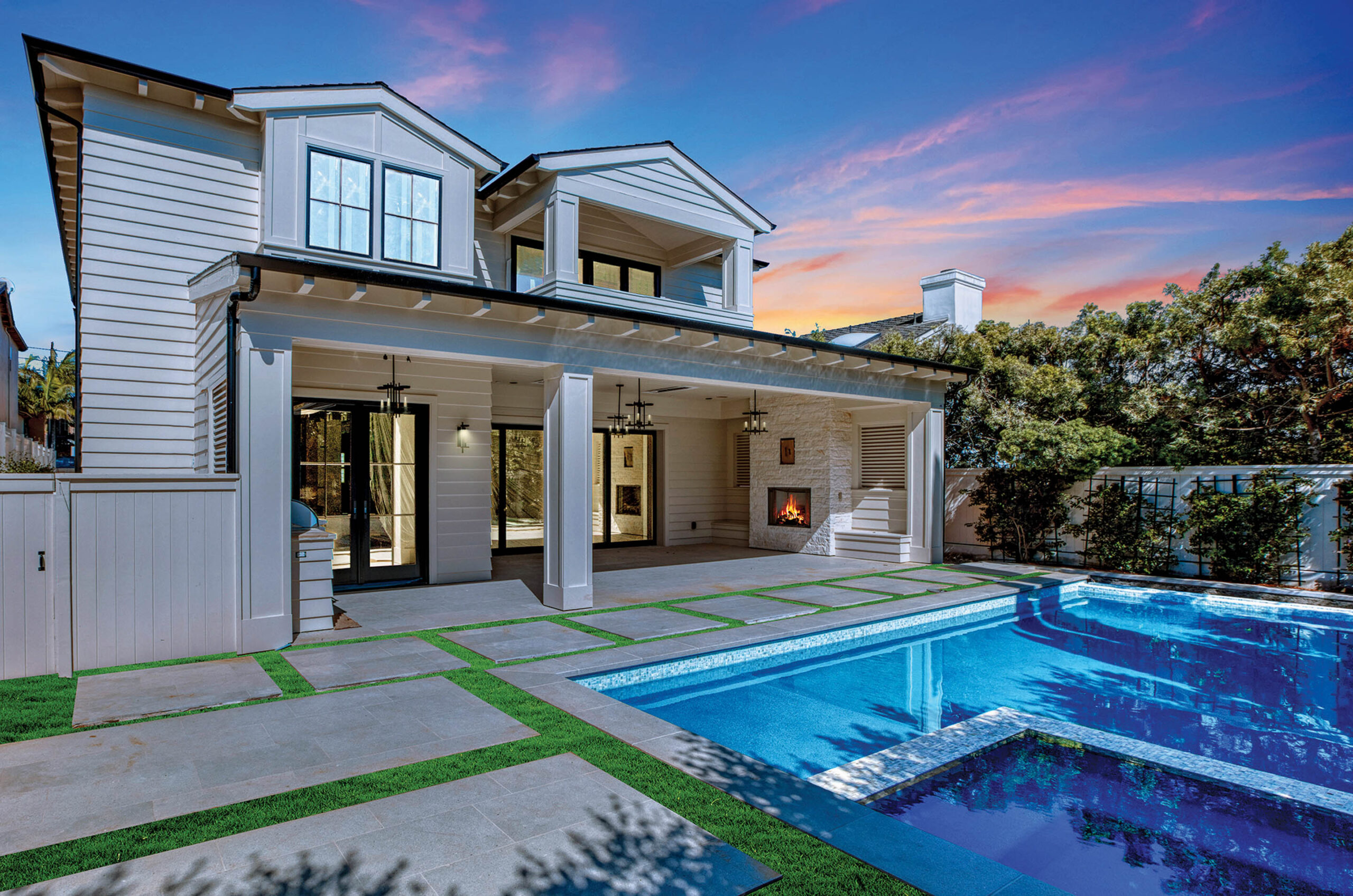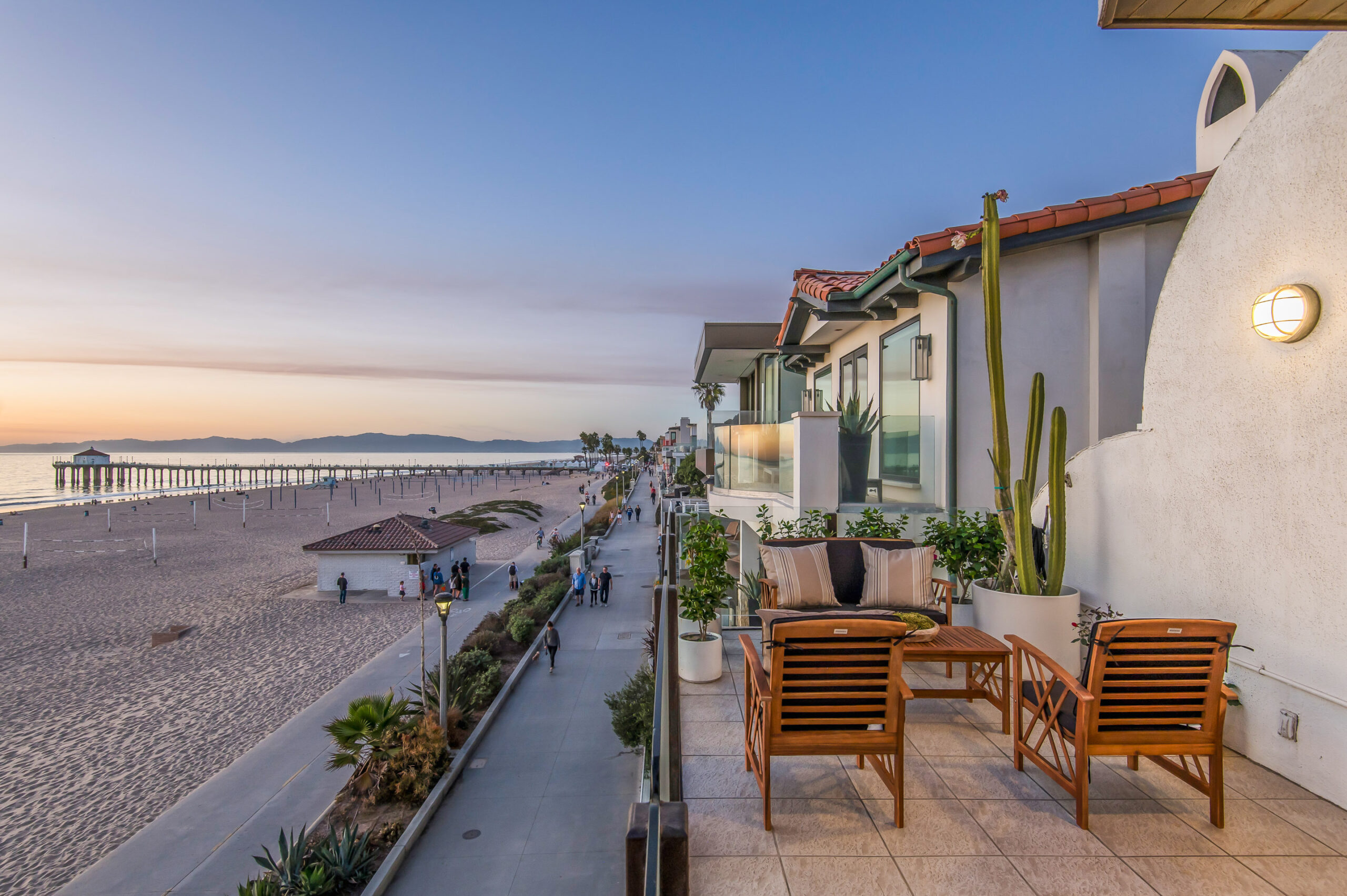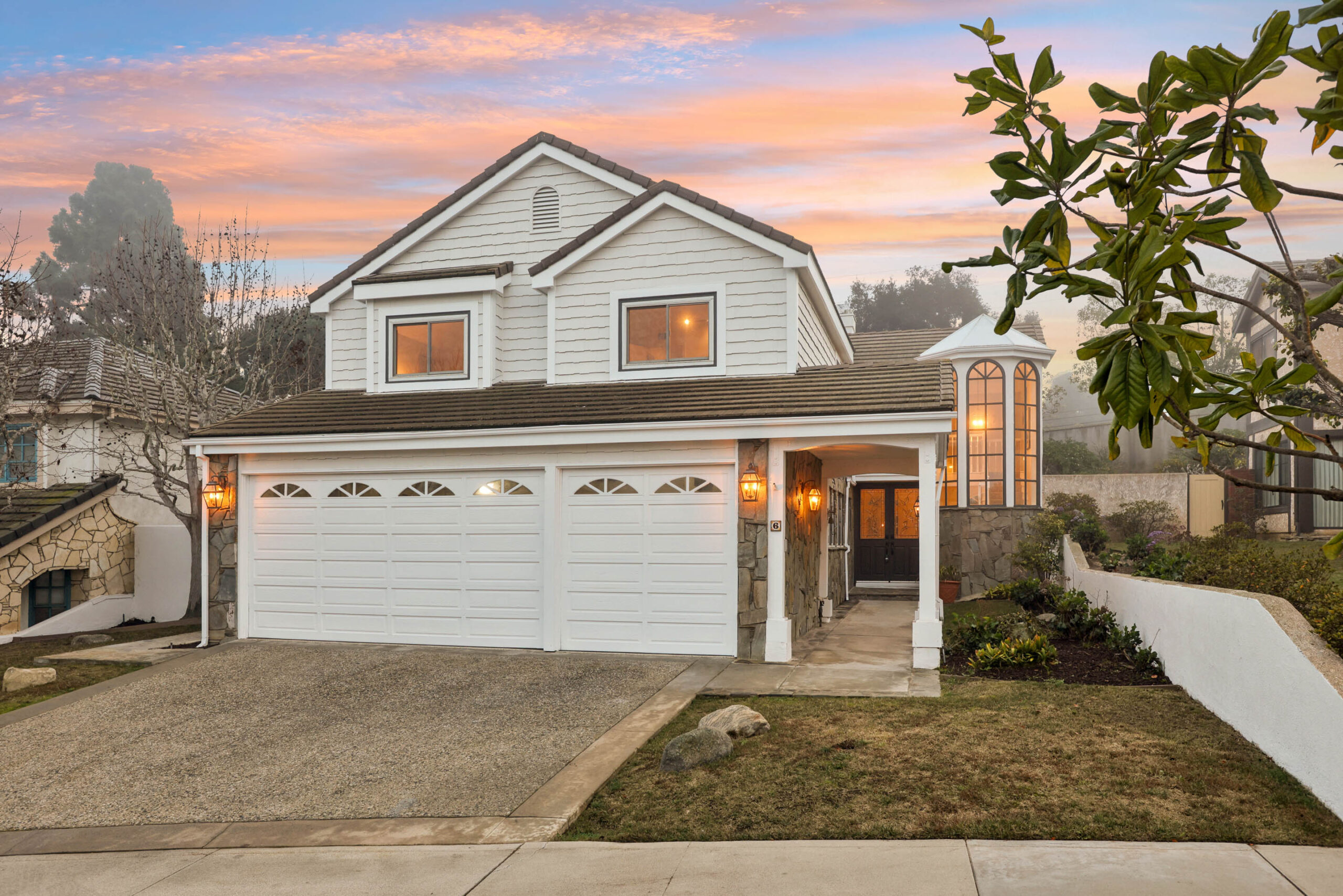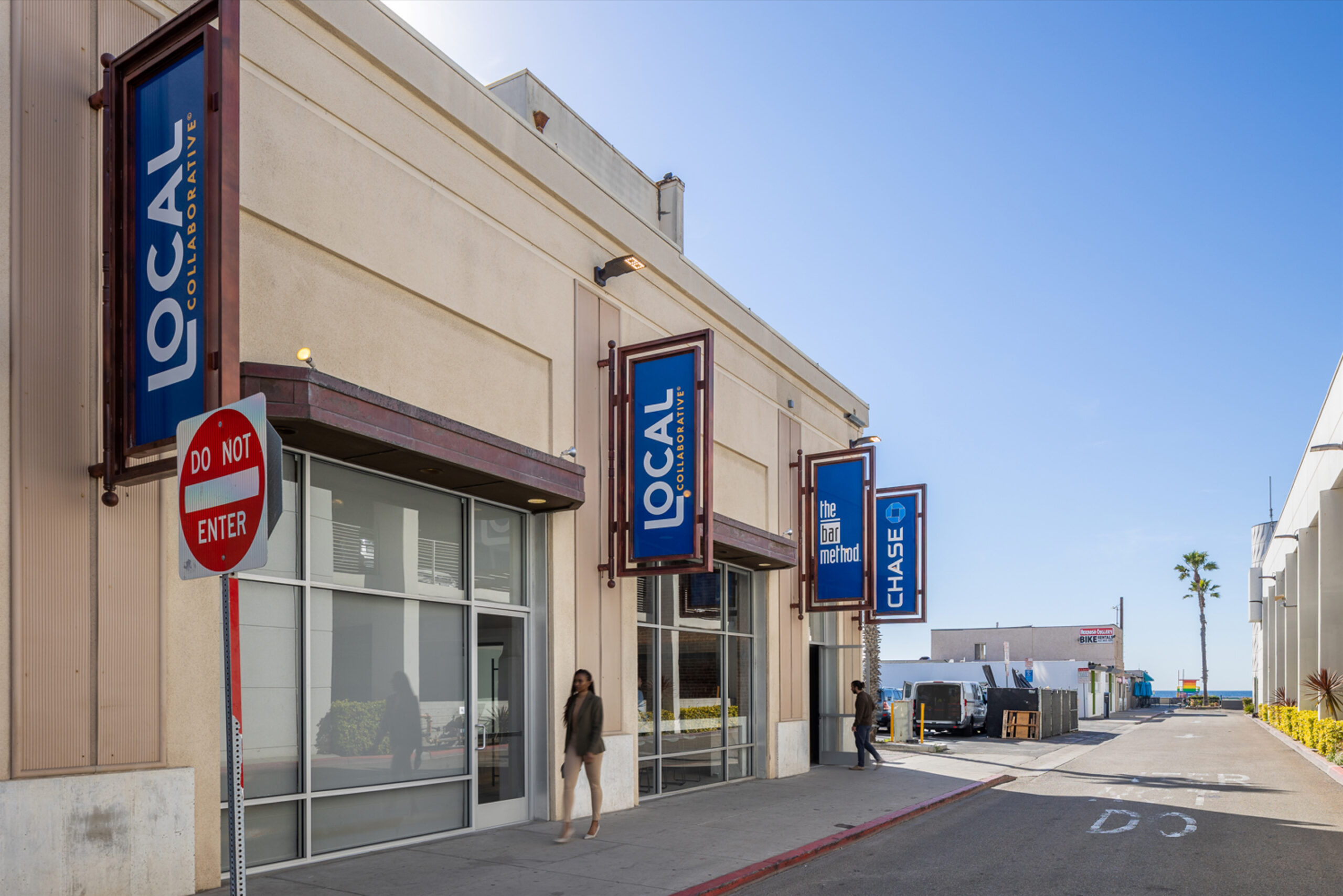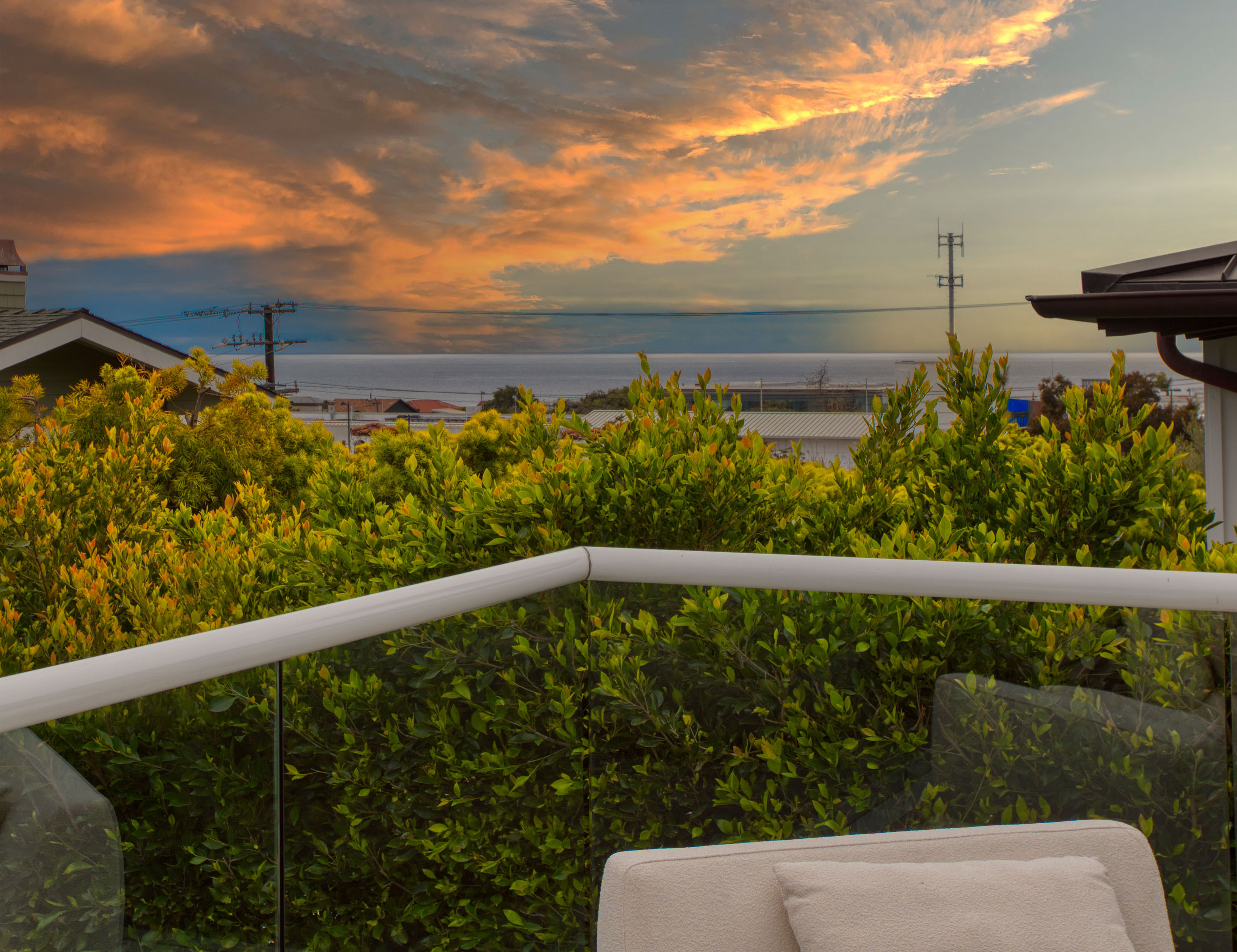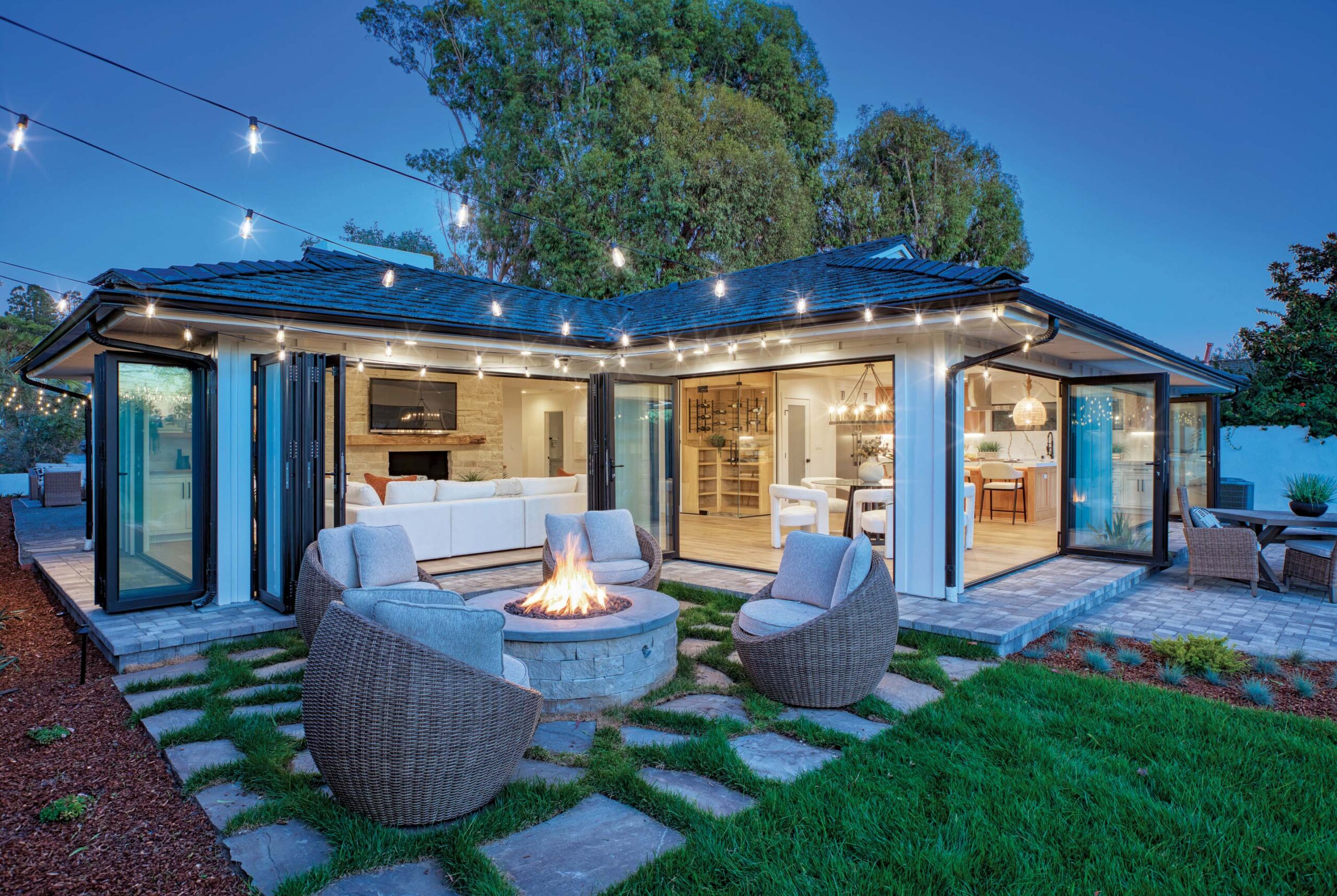Table of Contents
In this Episode
Architect David Thompson discusses his work in Southern California and the United States, including captivating projects like Laurel Hills and Wonderland Park. He explains the appeal of California modernism and the importance of nailing modernism in his designs. Thompson shares his background and influences, including growing up in Los Angeles and studying at Tulane.
He discusses the challenges and rewards of remodeling mid-century homes and the philosophy of sustainability in architecture. Thompson also explores the balance between residential and commercial projects and the feasibility of the Case Study program today.
In this conversation, David Thompson discusses various aspects of his work and the influence of Los Angeles on his architectural firm, Assembledge+. He talks about the sensibility of the 50s and the desire for modern conveniences during that time. He also shares why Assembledge+ chose to set up their headquarters on Sunset Boulevard and how the location is personally significant to him. Thompson emphasizes that while there is a Hollywood glamour associated with Los Angeles, his firm aims to highlight the beauty and profound aspects of the city beyond the entertainment industry.
He also reflects on growing up in a modernist home and how it influenced his career. Thompson concludes by expressing his commitment to creating honest and true work that reflects the origins and values of Assembledge+.
Takeaways
- California modernism has a global appeal due to its focus on engaging with the landscape and creating warm, accessible designs.
- Design should be both beautiful and pragmatic, serving the needs of the users and seamlessly integrating with the natural environment.
- Architects have a responsibility to be conscious of sustainability and to design buildings that respect and give back to the land.
- Understanding people and how they interact with the built environment is crucial in creating successful architectural designs.
- Surrounding yourself with well-designed objects and spaces can inspire and enhance your daily life. The sensibility of the 50s and the desire for modern conveniences influenced the architectural landscape of that time.
- Assembledge+’s headquarters on Sunset Boulevard is strategically located in the heart of Hollywood, which holds personal significance for David Thompson.
- While Los Angeles is often associated with Hollywood glamour, Assembledge+ aims to highlight the beauty and profound aspects of the city beyond the entertainment industry.
- Growing up in a modernist home shaped David Thompson’s perspective and influenced his career as an architect.
- Assembledge+ is committed to creating honest and true work that reflects their origins and values.
Quotes
“As architects, we’re on a constant learning process. We learn from everything—we learn from every step we make, and every project we’re a part of, and every client and every problem that we’re solving on every project,” he says. “That’s the beauty of the medium of architecture. As architects, we never stop learning.”
On growing up in Los Angeles: “It was super inspiring and an incredible place to be as a young person. I think it set me up for the life that I’m living both as an artist and architect and as a person. It was a great foundation.”
“LA is a pioneering place for all kinds of arts and incredible thinkers and people here who have really shaped the world. In that way, that’s what we’re trying to celebrate about LA as well.”
“I grew up on the Sunset Strip in West Hollywood,” says architect David Thompson, who’s lived in LA since age four, and was steeped in design at a young age courtesy of his architect father.
Sleepovers in a Schindler house in Silverlake (Howe House) were common, as was gazing over the twinkling expanse of the Hollywood Hills from his bedroom windows.
Growing in his young mind is what Thompson describes as a “subtle kind of fiber,” which would blossom after architecture school in New Orleans and a return to Los Angeles.
There he got to work designing, eventually opening his own firm, Assembledge+, which is known for its award-winning new Modernist residences and studied renovations that add faithful new chapters and volumes to existing Mid Century works. There are also commercial projects, notably restaurants offering keenly felt residential and sensory experiences.
“Hollywood has been my developmental playground for my whole life, so it’s kind of perfect that we’re smack dab in the middle of Hollywood,” Thompson says of Assembledge+, which is located steps from Sunset and Vine, and a couple of blocks south of the Hollywood Walk of Fame.
In this far-reaching interview, Los Angeles architect David Thompson joins Titans of Trade to discuss his firm’s approach and his award-winning Laurel Hills residence; as well as the cultivation of his design eye, and the unique West Coast Modernist aesthetic his firm is known for. “California has always been on the radar in the world,” he points out. “We are continuing a Modernist sensibility that has been cultivated here for many years, and carrying on that torch.”
Take the firm’s Laurel Hills Residence. This open-air residence, consisting of three volumes linked by glass hallways, was built by Thompson for his family in Studio City— and has captured over a dozen awards in the U.S. and beyond. “It resonates with a lot of people,” the architect says of its appeal. “All of our work, we consider it to be a warm Modernism. It’s quite accessible to people [and they] understand it.” Typical of an Assembledge+ project, the floorplan stays linked to the landscape—and so do the materials, which present a tactile experience that furthers one’s connection with their surroundings. “If there’s a subtle engagement with nature on a daily basis that just kind of happens, I think inspires you as a human,” the architect points out. Thompson also talks his firm’s historic renovations, where Mid Century California homes are updated and expanded with a current stamp that’s still truthful to the original premise of the project.
“We are trying to put ourselves back into the shoes of the designers and architects of the time—but we realize also that we’re a part of that thread of history that’s going into this project,” describes Thompson.
“We’re breathing new life into it and bringing it up to modern day, so hopefully that historical thread will stay with it for much longer, and then we add a layer of that history to the project and to the place.”
Follow David Thompson
Website: assembledge.com
Instagram: https://www.instagram.com/assembledge
LinkedIn: https://www.linkedin.com/company/assembledge-
Full Transcript
Constance (00:01.706)
Welcome to Titans of Trade. I am your host, Constance Dunn. And today we welcome architect David Thompson, whose LA firm Assemblage is responsible for commercial and residential projects. So I’ll do that again. Welcome to Titans of Trade. I am your host, Constance Dunn. And today we welcome architect David Thompson, whose Los Angeles firm Assemblage is responsible for commercial and residential projects.
some of which have been kind of catching fire, the states and California and well beyond. So we’re gonna talk about that today. So welcome, David.
David Thompson (00:36.32)
Okay.
Constance (00:38.13)
So it’s what I find really interesting is you are a California modernist and your works tend to be focused in Southern California, but you have a there’s some awards we’ll talk about, but they’re not just in the US there’s a IA and whatnot. But they’re also in Europe as well and there’s a lot of press. I was just reading an article I think it was about Laurel Hills and it was an architectural digest France.
So I’m kind of curious if you’ve thought about what is so kind of captivating about projects like Laurel or Wonderland Park, that it’s kind of Europe is just like, hmm, interesting.
David Thompson (01:22.249)
Well, I think Southern California has always been, you know, a marker of design throughout the world. You know, there’s always been a focus on it.
There’s some incredible things of the lifestyle that we can have here, certainly as it relates to architecture and design. We can be outside 365 days a year, so it really lends a really incredible opportunity for the architecture to kind of engage with the landscape and things like that. So California has kind of always been on the radar in the world, and I think that we are…
Constance (01:53.388)
Mm-hmm.
David Thompson (02:01.122)
continuing a modern sensibility that’s been cultivated here for many years. I think we’re just carrying on that torch.
Constance (02:02.898)
Mm-hmm.
Constance (02:09.736)
Mmm.
Mm-hmm. Yeah, and it’s kind of interesting about Laurel as well, Laurel Hills residents, because that has gotten just a lot of awards. So I think it’s kind of beyond California being interesting kind of in your globally or in Europe as well, these projects of yours, I mean, they’ve really kind of caught fire and if you’re being modest, don’t. Because is it because you’ve nailed like modernism in such a specific way?
David Thompson (02:41.79)
I mean, sure, I think we have. I think we have nailed it. I think we continue to nail it. And in this particular project, I just think it resonates with a lot of people. I think what, you know, there’s a warmness to this place. There’s a special, I’m sitting here in the Laurel Hills Residence now and on the site, and there’s something very special about the place. There’s something special about that just resonates. It’s got…
Constance (02:46.619)
Yeah.
Constance (02:52.335)
Right.
Constance (02:57.936)
Mm-hmm.
Constance (03:03.107)
Uh-huh.
David Thompson (03:11.262)
a warm quality to it. All of our work, we consider it to kind of be a warm modernism. So I think it’s quite accessible to people. People understand it. It just resonates with them. And I think when you come here and you kind of are engaged in the natural environment and the openness of the plan and these doors behind me and the doors in front of me all kind of open up and you’re really kind of seamlessly
Constance (03:20.567)
Right.
Constance (03:26.811)
Yeah.
Constance (03:34.927)
Mm-hmm. Right.
David Thompson (03:41.086)
spilling into the landscape, I think that really resonates. And then the material palette here, it’s very warm, it’s very accessible. And I think the architecture here really takes the user and then the people component of architecture really seriously. And so I think that because that is sort of a driving force of a lot of the work that we do, I think it resonates with people.
Constance (03:42.884)
Mm-hmm.
Mmm.
Constance (04:01.222)
Mm-hmm.
Constance (04:07.01)
Right. And there’s something about, let’s say, Laurel Hills or Wonderland, or actually, Freiman Canyon, I can’t wait to talk about. That’s a fascinating project. But perhaps they’re using this as a template for how to do this themselves or to glean ideas, because you’re not just doing modernism, California modernism. You’re also doing it like
there’s a lot of emphasis on your materials, like sustainable materials. So I guess that’s probably very evocative and interesting to people. Is that a big part of it?
David Thompson (04:41.326)
Yeah, I mean, I think materiality is an important piece. And like I said before, we try and we try and bring a kind of warm modernism to it where there’s materials that are tactile and there, and they resonate with the human spirit and they’re warm and natural and things like that. So there is that, you know, while certainly here in Southern California, our projects are really engaging with the landscape, the materiality.
Constance (04:44.635)
Uh-huh.
Constance (04:50.135)
Right.
Uh huh.
Constance (04:56.61)
Mm-hmm. Great.
Constance (05:07.416)
Raid.
David Thompson (05:08.25)
also engaging with the landscape too and it just feels very natural and the houses and things feel really rooted in their site and really part of the landscape and not so much like a building set on land but a building that really becomes part of the landscape and part of the site.
Constance (05:14.351)
Mm-hmm.
Constance (05:19.15)
Mm-hmm.
Constance (05:27.298)
Right, and you know with the mid-century modernism, like you know, Friam and Canyon is a really great example just because this is 1957 ranch home and Studio City, California, and there was a contemporary enhancement. You added another floor, but you also made the whole thing. Oh, hey, can you hear me?
David Thompson (05:42.15)
Did I lose you? I think I lost you for, yeah, you cut out for a few seconds. Maybe start that over again.
Constance (05:48.286)
Oh, okay. So I’m curious about your mid-century modernism connection because I see in your works that you really, really seem to have a really profound understanding of it and you’re able to take it to build upon it, chapters and chapters and in a very modern way, but in a way that’s really, you know, really is honest to the premises. You know, you’re not doing something that goes, you know,
where the finished product is like, oh, I can see where there was some work done or I can see where the real house was and then they’ve kind of added some jazz. So I’m curious about like your background. You’re an LA native. So probably that has something to do with it.
David Thompson (06:32.926)
Yeah, I mean, I wasn’t born here, but I’ve been here since I was like four years old. So as far as everybody’s concerned, I’m a Los Angeles native. I grew up on the Sunset Strip in West Hollywood, so like right in the thick of it. My father’s an architect and he had his own practice as a young, as when I was a young kid. So architecture has kind of been in my blood since I was quite young. And you know, California,
Constance (06:35.504)
Mm-hmm.
Uh huh.
Constance (06:41.871)
Right?
Constance (06:49.595)
Mm-hmm.
Constance (06:58.543)
Right.
David Thompson (07:00.842)
You know, so that, you know, I’ve certainly as I, when I discovered that architecture was something that I wanted to be a part of, you know, the California history and California modernism is something that was really influential to me. And you know, I had visited some of the early California, my father’s partner owned a Schindler house, the Howe house in Silver Lake that I used to go to sleepovers at when I was a kid.
So there was this sort of like this kind of subtle, you know, subtle kind of fiber that was through my body that I didn’t even really know was kind of happening because it was kind of happening subtly in the background. And then when, as I discovered architecture as something that was, that I wanted to do and be a part of, you know, it was very easy to kind of like come back to the roots of Southern California as a means of inspiration and a means of.
Constance (07:41.779)
Mmm.
Constance (07:56.282)
Ray? Uh-huh.
David Thompson (08:00.014)
uh… you know where i can kind of focus myself as i learned more about uh… what was interesting to me in architecture so california the california modernist became a very you know assert root of what uh… has developed me as a man or uh… you know my own sensibility as an art
Constance (08:19.258)
And it’s interesting because you went to Tulane for your undergraduate and master’s, so I’m curious about like your training there. Like that’s an interesting choice. Like did you, how was that molded there?
David Thompson (08:26.445)
Yeah.
David Thompson (08:32.134)
Oh, I mean, it’s such a fantastic place. I mean, New Orleans is still to this day one of my favorite places on the planet. And it’s very inspirational. I mean, it’s a very, obviously a very historic city. So the fabric is, it’s got a very rich and dark and beautiful history to it.
Constance (08:43.364)
Uh-huh.
Constance (08:50.258)
Great.
Constance (08:57.56)
Uh huh.
David Thompson (08:59.214)
And being in school there was kind of interesting to kind of be in the backdrop of this very historical city and being a part of this school of architecture that was really progressive thinking and things like that. So the contrast of those two things against each other was really an incredible breeding ground for really amazing ideas and thought process. And it taught me a lot and it really formed me into who I am as a person.
human and as an architect. But it was also like getting away from California too. Like it was like, I think in hindsight, I didn’t quite know that when I was doing that. But when I left to go away, I was, you know, I was, because I grew up in California, I thought everything was centered around California. And so getting away and seeing, meeting other people from other, you know, cultures and backgrounds and locations and things like that were all kind of, you know,
Constance (09:29.615)
Yeah.
Constance (09:33.423)
Right.
Constance (09:53.014)
Mm-hmm.
David Thompson (09:57.61)
really fueling me as a human and then subsequently as an architect, but those experiences were profound for me.
Constance (10:07.798)
No doubt. And I’m curious when you have a project where you have a bonafide mid-century structure and you are charged with expanding it, with making it modern, how do you do that? How do you kind of dig into its roots and then build upon them? Again, doing it faithfully in that way you seem to be able to do.
David Thompson (10:34.07)
Yeah, I mean, that’s a great question because every project sort of delivers a little bit of a different set of ingredients for it, right? I mean, we’re not necessarily doing meticulous restorations of these projects. We are doing renovations and things to those projects. So they sort of call for a little bit of a different methodology, if you will, in the way we approach them.
Constance (10:35.844)
Mm-hmm.
Constance (10:50.674)
Mm-hmm.
Constance (11:03.25)
Mm-hmm.
David Thompson (11:04.082)
Um, you know, we look at these things, we look at these projects, we look at them for their history, we’re inspired by them, by their history and what they were, you know, what they were looking to accomplish in their day. And then we are looking to kind of revive them and bring them into a modern day for our clients and whatever their particular requirements are. So you know, we sit with these projects for a while, we’re inspired by them, we kind of, we let them.
uh… inform us as to what needs to be done in obviously like i said we’re not uh… meticulously restoring them as though it’s uh… you know like a recreation of that we’re trying to bring it into its modern day and trying to think trying to think what those architects and designers were trying to encapsulate in their projects then and trying to re uh…
Constance (11:34.259)
Mm-hmm.
Constance (11:40.87)
Mm-hmm.
David Thompson (11:58.294)
use that thread as a way in which we approach the projects today.
Constance (12:03.554)
Ah, I love the thread. So it’s almost like it could be like an actor’s technique in a sense, like where do you step into the character’s shoes in a way.
David Thompson (12:09.102)
Sure.
David Thompson (12:13.022)
Yeah, I mean, you know, we’re trying to bring our own sensibility and we understand that our role in the history of these projects is also different, right? You know, we’re, like I said, it’s different, I think it is different to kind of, to compartmentalize them, to say here’s a restoration project of a, you know, like some project that is, you know, that somebody is saying, like, I want to meticulously restore it and bring it back to what it was when it was built.
Constance (12:17.443)
Right.
Constance (12:22.431)
Uh huh. Right.
Constance (12:32.62)
Mm-hmm.
David Thompson (12:42.922)
It’s different than a renovation or addition to a historic or mid-century place. So we are trying to put ourselves back into the shoes of the designers and architects of the time, but we realize also that we’re a part of that thread of history that’s going into this project and we’re breathing new life into it and bringing it up to modern day so that hopefully that…
Constance (13:09.234)
Mm-hmm.
David Thompson (13:10.646)
historical thread will stay with it for much longer. And then we add a layer of that history to the project and to the place.
Constance (13:15.557)
Right.
Constance (13:24.15)
Yeah, I’m curious because you live in one of your most notable projects, the Laurel Hill residents, and I’m curious about taking risks and if there’s something in there that you were like, hmm, this could be interesting or not, but that may be worked out really well because you’re living in there, right? And I imagine it was built in a sense like a custom suit, you know? It must have been very interesting, but back to the question was, again, I’m kind of rambling, but
the idea of a risk, something exciting that you were able to do because you were the client in this case. You’re like, I don’t…
David Thompson (13:59.39)
Yeah, I mean, there’s this inherent risk in embarking on any architectural project, whether you’re the client, you’re the architect, there’s just, it’s, there are challenges. And so yeah, we, you know, by being the client, it allowed us, I guess, some freedom, although our clients allow us quite a bit of freedom, actually. I would say that there was a different type of obsessiveness about
Constance (14:05.842)
dessert.
Yeah.
Constance (14:20.294)
That’s good.
David Thompson (14:26.55)
designing my own house, then I mean, there’s an obsessiveness with all of our projects that I Encapsulate myself and all of our projects in some way But this one was hard to put down, you know at bedtime and stuff like that. It’s hard to put it down so that was you know, that was a Interesting component of it where it’s just it’s kind of a non-stop thinking about it but
Constance (14:50.17)
Right.
David Thompson (14:52.39)
You know as far as risks are concerned like I mean like us like I said It’s a risk to take on a project like this inherently just in general And so I don’t I don’t know that we you know I think that everything we were doing here was so painstakingly thought about that I got a certain point we had kind of mitigated the risks if you will So I don’t come I don’t come to the other side of it going like oh man I wish I had done that or I wish I had done this it was
Constance (15:13.743)
Yeah.
Constance (15:19.035)
Mm-hmm.
David Thompson (15:20.862)
It’s more of a place of beautiful surprises or things like that. We thought about everything, but then all of a sudden you’re kind of looking, you’re like, oh, that’s a really beautiful view of that tree. Or that window now frames some really abstract, beautiful view that maybe you didn’t understand. So these things are…
just like all of our projects, they are works in progress for us to learn. And we’re in a constant, as architects, we’re on a constant learning process. We learn from everything, we learn from every step we make and every project we’re a part of and every client and every problem that we’re solving in every project. So it’s a continual learning process. I think that’s the beauty of the medium of architecture is that as architects we…
Constance (15:52.542)
Mm-hmm.
Constance (15:57.148)
Right.
Constance (16:06.819)
Me? Yeah.
Constance (16:14.012)
Hmm.
David Thompson (16:15.714)
we never stop learning. We keep learning from the last thing we did and the last challenge that we were faced with or whatever. So it’s kind of a, it’s a really beautiful growth process as an artist and as a human and as an architect.
Constance (16:24.102)
Yeah.
Constance (16:34.05)
Yeah, and I’m curious just being in this work and you’re at home, is there something that like just about every day or regularly you’re like, that’s great, I’m so happy I did that or something that’s particularly user friendly, because I know pragmatism is a big part of your work. I know that’s like something that you guys talk about a lot at assemblage, like being very pragmatic.
David Thompson (16:58.974)
Yeah, I mean, these projects need to work. You know, they need to, you know, when we solve problems as architects, we are solving problems for users and for people, right? And at the end of the day, it has to serve those purposes. As beautiful as it, you know, to me the most successful architecture hits on all of those points. It’s not just beautiful, it’s not just pragmatic, it’s all of those things.
Constance (17:02.819)
Right.
Constance (17:10.075)
Yeah.
Constance (17:15.13)
Right.
Constance (17:21.819)
Right.
Constance (17:25.358)
Right.
David Thompson (17:26.11)
And that’s when, to me, it really sings. And so it has to work. It has to work for the users. And in the case of a house, it has to do all the things that you need for daily living. And this house is for a family of four. And it’s working every day. It’s working. It’s working for a family. And that has to go through the motions of living that…
Constance (17:29.923)
Right.
Constance (17:40.802)
Right.
Constance (17:48.849)
Uh-huh.
Constance (17:54.348)
Uh-huh.
David Thompson (17:55.21)
And in some ways, the architecture is a backdrop for that. It wants to function and do all the things that it needs to do to serve the purposes of living. And then at the same time, if it can be inspiring and maybe a subtle inspiration, like walking from the bedrooms to the kitchen, you’re passing through a bunch of glass.
Constance (17:59.438)
Hmm.
Constance (18:08.603)
Mm-hmm.
Constance (18:15.154)
Mm-hmm.
David Thompson (18:20.842)
walls that have, you know, the landscape around you feel like you’re walking outside. And I think if there’s sort of a subtle engagement with nature on a daily basis that just kind of happens, that I think inspires you as a human. Like I can see it in watching my kids and just sort of seeing them, you know, I grew up in a house that my father designed and, you know, maybe in the moment I
Constance (18:30.09)
Mm.
Constance (18:40.038)
Alright.
David Thompson (18:50.678)
life, I understood that being in environments that are designed and well thought of and inspiring, just kind of inspiring you throughout your life and whatever you’re doing. But it has to do all those things, right? Like I said before, I think in order for it to be really successful, it has to fire on all those cylinders.
Constance (19:09.827)
Right.
Constance (19:15.47)
Yeah, here’s kind of a funny DIY question. I love the idea of what you’re saying about interacting with nature on the regular, just in the course of living in your home. And for someone who doesn’t have a custom home or maybe is in an apartment or something, what’s kind of like a way that they could do that? I know this is a strange question, but I always just love kind of tips and tricks for people who do this all day.
David Thompson (19:41.426)
Yeah, well, I mean, one thing, and you might not be able to change these things, but natural light is certainly a key component, right? The more natural light we can invite into the spaces, I think the better. We’re fueled by sunlight and those things are great. But you might not have some of the opportunities if you’re not living in a custom home, but you can surround yourself with design. Design is everywhere. And well thought out.
Constance (19:48.887)
Uh-huh.
Constance (19:55.462)
Mm-hmm.
Yeah.
Constance (20:05.199)
Right.
David Thompson (20:11.13)
things, products, furniture, architecture. I mean, design goes into so many things and it’s so important. And you can tell the things that are really well designed and have really great minds putting thought into them from everything. And so I think it doesn’t just have to be architecture but like just…
Constance (20:12.315)
Mm-hmm.
Constance (20:21.63)
Mm-hmm.
Constance (20:31.126)
Great.
Constance (20:38.086)
Cue.
David Thompson (20:39.33)
items in general that surround or you know you work with every day or things that are a part of your living experience or your working experience or you know there’s a lot of really smart and talented people out there putting lots of thought into these things and you can surround yourself with that and I think that will help to inspire you in other ways to decide that well-designed things or homes or whatever it is that
Constance (20:48.101)
Yeah.
Constance (20:55.432)
Mm-hmm. Yeah.
Constance (21:05.918)
Anyway…
David Thompson (21:07.046)
is develop your life is important.
Constance (21:10.502)
That’s a good point. So even starting small, like getting a beautiful pen that appeals to you and that could potentially layer onto other things like, huh, okay, maybe I’m gonna change up my desk and then add other things. And then lo and behold, you’re surrounded by excellent design. Yeah.
David Thompson (21:16.366)
Sure.
David Thompson (21:25.166)
Sure.
David Thompson (21:29.13)
Absolutely. And then I think, I think the more you get involved in that, you realize and you look around in the world that everything is like that. I mean, cities, I mean, think about cities in infrastructures and things like that as you move along. And when you run into something that isn’t well designed and it’s kind of like, sometimes really good design should go almost unnoticed, right? It should be very subtle in some ways.
Constance (21:38.134)
Right.
Constance (21:46.799)
Right, ah.
Constance (21:52.694)
Okay, alright.
Uh huh.
David Thompson (21:57.499)
It can be very impactful and very much in your face, but it can also be like just design that just kind of goes and subtly finds its way and something’s really, it works. That really works and you’re not sure why.
Constance (22:13.249)
Uh-huh. So part of that is training your eye, kind of being conscious about what you’re looking at and perhaps deconstructing. Oh, I like this because. And then perhaps, OK. So what are some?
David Thompson (22:23.434)
Yeah, I think deconstructing is a great way to put it.
Constance (22:28.522)
Okay, so what things have trained your eye besides sleeping in meds mid century homes, living in a home being raised by an architect? What were some things that were really pivotal to kind of training your eye or building your aesthetic even?
David Thompson (22:45.754)
Um, I mean, I think the greatest thing that has been my teacher is time, you know, just time. You just, you know, I look back, you know, I’ve been kind of looking back at some of the older work that, you know, kind of got me where I’m going. It’s very different than what I’m doing now. And I think it’s just time. I think I’ve just evolved as a, as a, as a human and as a artist and an architect. And, um,
just I’ve learned a lot over the years by doing, I’ve been doing this for a very long time. And so I wanna say that what has inspired me hasn’t changed, but I have learned a lot on my path. And that is what has informed me and inspired me and shifted gears for me in many ways. And so I think that the greatest thing for
Constance (23:18.034)
Mm-hmm.
Okay.
Constance (23:30.043)
Mm-hmm.
Constance (23:36.495)
Yeah.
David Thompson (23:42.214)
artists and architects are time. It’s just, you’re learning every place that you go. All the traveling I’ve done, all of the architecture that I’ve visited and all the people that I’ve spoke to and all the interactions with humans that help to inform me. I mean, because at the end of the day, we as architects, we’re designing buildings for people. We’re not designing buildings.
Constance (23:47.887)
Yeah.
Constance (24:08.923)
Mm-hmm.
David Thompson (24:09.826)
buildings, we’re designing buildings for people. They’re there for people to inhabit and every form that there is, every building type out there, we’re designing for people. So we have to understand people and how they interact with the world and how they, in case of residential work, as I said before, how they live. What is it that, you know, and in some ways then when we interact with a client to do the work for
like a residential project, you know, everybody, everybody does many of the similar things and in the in living in a house, but they’re making unique things for everybody. So listening to them and sort of discerning from them, what is unique for them in their life and what they need. And then how can we turn that into an architectural statement or vernacular or use design to interpret that.
Constance (24:45.322)
Mm-hmm. Uh-huh.
David Thompson (25:07.838)
in architectural terms. But we need to learn and understand people, human and understanding them and what we need and how we live is probably the most inspirational part of our process.
Constance (25:09.794)
Right.
Constance (25:14.047)
Uh-huh.
Constance (25:24.93)
Yeah, you have to have an understanding of humans. And I imagine that requires, it’s important for you when you’re meeting with clients and doing residential or commercial work, that you basically, you have to bring your experience and tell them perhaps it’s something that runs contrary to what they want. Or you have to put forth, well, hey, I just want to let you know that, you know, things that are unforeseen for people who are not architects.
Is that something you have to do a lot? Is that easy or how do you do it?
David Thompson (25:59.086)
Well, that’s a great question. I mean, I suppose it depends on the person that we’re interacting with, right? I mean, I’m fortunate to say that all of the people that have come to us, they’re coming to us for our expertise and for what we’ve done. And I’m fortunate that the people that we have been fortunate to work with over the years and doing our projects believe that
Constance (26:05.37)
Yeah.
Constance (26:14.822)
Mmm.
David Thompson (26:28.774)
what we do has great value and that architects have a purpose and a reason and their methodology of thinking and their critical thinking skills and problem solving skills are important in solving their problems of whatever they are asking us to design. So it depends on who the people are but often they are looking for us to kind of help define that.
Constance (26:48.963)
Right.
Constance (26:53.58)
All right.
David Thompson (26:57.542)
if they come with something that may be contradictory of that, then we, you know, it creates discourse, dialogue about what it is. And then because of our expertise, we might be able to kind of unpack that. We might learn something very new about that as well, but we will also maybe be able to unpack it in a way that most people don’t have all of the layers of thinking that goes into.
Constance (27:01.524)
Hello?
Constance (27:06.021)
Yeah.
David Thompson (27:23.878)
something because we have you know we’re thinking about the design but there are many other layers that we are thinking about in order to Execute a project because there’s lots of things go into actually making these things out
Constance (27:24.09)
Great.
Constance (27:31.348)
Mm-hmm. Right.
Constance (27:37.046)
Right, right. And you have this secret knowledge. Like, for instance, if you are remodeling a mid-century home, there are going to perhaps be some unforeseen challenges. And I was curious, are there a few that you run into over, you have run into over and over again, or like general areas?
David Thompson (27:47.202)
Sure.
David Thompson (27:56.594)
I mean, we run into them on every project that we were involved in, of course. I mean, you know, and, um, you know, in the mid-century example, you know, there’s just, there’s always the challenges of the way things were built back in the day and the way they’re built now. And we can’t, many of those mid-century houses, you can’t build them. You couldn’t build them the same way now just because of, uh, construction methods and from energy codes.
Constance (28:01.126)
Uh-huh.
Constance (28:13.042)
Great.
Constance (28:20.893)
Mm-hmm.
David Thompson (28:26.398)
you know, just the different types of things that go into these projects, you just can’t build them that way anymore. So you know, often assemblies get thicker, things like that in order to accommodate energy and insulation or things like that or stuff like that. So there’s always challenges with trying to, you know, incorporate the modern day requirements.
Constance (28:26.593)
Ah.
Constance (28:30.466)
Mm. Right.
Constance (28:54.675)
Mm-hmm.
David Thompson (28:54.806)
onto something that is, you know, 50 or 60 or 70 years old, and trying to maintain the sensibility and the character or the detailing or things like that. So it’s, we’re challenged by that, but it also is, we welcome the challenge. It makes it, it makes it, it makes it fun. It keeps us, keeps us on our toes for sure.
Constance (28:59.662)
Mm-hmm. Right.
Constance (29:07.228)
Yeah.
Constance (29:14.928)
Yeah.
Constance (29:22.326)
Exactly. And I know sustainability is like a big part of your mission or your firm’s mission and just for defining at what does that mean for you guys.
David Thompson (29:34.634)
I mean, I think sustainability means for us that we have a responsibility as architects that are manipulating the built environment and manipulating the natural environment to be conscious of how we step through the world. So we want to be very respectful when we place a structure on the land.
Constance (29:53.671)
Yeah.
Constance (30:04.164)
Is it?
David Thompson (30:04.862)
We hold the land to be very sacred and special. We want to do that in a manner that we feel like these buildings can work and be work horses in sustainability. So if they’re designed properly and utilize sustainable technologies, they can kind of give back to the land, which is kind of a very Native American philosophy, if you will. Be respectful of the land.
Constance (30:17.339)
Hmm.
Constance (30:26.15)
Hmm.
David Thompson (30:33.762)
give back to the land. So I think the, you know, we try and employ whatever kind of sustainability measures we can. We sort of have a benchmark of what we do and we encourage our clients to go further if we can. So we just feel that there’s an ultimate responsibility that we have because of the kind of work we do.
Constance (30:50.811)
Yeah.
Constance (30:58.378)
Right, right. Do you have a kind of material that you’ve used kind of recently or that you use quite a bit that you’re particularly fond?
David Thompson (31:09.894)
Like, not a specific material. I think it’s more of a, it’s more of a continual, you know, we try and take a thread through the whole project and think of it from a sustainability perspective. So we use, you know, kind of a sustainable thinking in our approach to all levels of design, both in the early design stages, as well as in.
Constance (31:21.735)
Right.
Constance (31:32.016)
Yeah.
You’re right.
David Thompson (31:37.042)
in the material selections and things like that. So we try and use it as a continual thread.
Constance (31:39.516)
Mm-hmm.
Constance (31:43.106)
Right. And it’s interesting thinking about the architects, the famous mid-century and I’m a big Neutra person, but and their writings and philosophically, you know, the ideas that really were the engine behind the product, right, behind their design. And I’m curious. And you obviously work in the vein of modernism in California, and I’m curious which one of like philosophically
If there’s, you know, certain ideas or philosophies that really square with you personally.
David Thompson (32:21.878)
I mean, I think some of the mid-century modern philosophies that really were tied into, there’s certainly the just a new way of thinking, of living, certainly as it relates to residential. I just think that the connectivity with nature, the just the.
Constance (32:37.574)
Hello?
David Thompson (32:48.854)
the indoor outdoor living, especially as it relates to Southern California. You know, some, as I mentioned earlier, the idea that we can be outside 365 days a year, we really look for the architecture to blur that line between indoor and outdoor and let your daily living experience be pushed to the outside so that we can just kind of be in nature and connect with nature.
Constance (32:53.584)
Yeah.
Constance (32:59.416)
Yeah.
Constance (33:04.85)
Hmm.
Constance (33:13.006)
Great.
David Thompson (33:18.922)
And so I think that’s a real, you know, thread from the mid-century modernists like Neutra and Schindler and those guys. And then, you know, I think kind of stripping everything down to a sort of simplicity and being really true to the materials and things like that I think were threads that we are, you know…
Constance (33:28.335)
Right.
David Thompson (33:45.822)
We’re certainly inspired by and trying to carry on from the mid-century modernists.
Constance (33:50.306)
Yeah. And talking to you, it makes sense how your firm does residential and commercial as well. I don’t see that all the time. And it’s interesting, you’re able to toggle between those two.
David Thompson (33:59.479)
Yeah.
David Thompson (34:03.306)
Yeah, I mean, they’re different animals, no doubt. But, and they’re different types of projects that have different types of constraints and problems to solve and so on. And in our case, you know, we do a lot of hospitality and what, and some of the restaurants we do, what we’re trying to do with those is really bring a residential vibe to them. We’re trying for the patron to kind of create this residential experience, if you will. And that’s really kind of related to.
Constance (34:05.379)
Right.
Constance (34:17.254)
Yeah.
David Thompson (34:33.194)
materiality and warmth and, you know, like a sort of very tactile nature to it and a comfortability in the experience when you’re out and about and, you know, and having a sensory experience with food. I think we’re trying to bring a very, you know, detail oriented and warm, tactile experience to those spaces.
Constance (34:57.458)
That’s interesting and it’s an interesting choice. And when was it that you decided, we’re gonna do commercial as well, or maybe it went the other way, we’re doing it.
David Thompson (35:05.398)
Yeah, no, I wish I could say I was very deliberate about that. It was very much like it just kind of happened, which is kind of the nature of architecture. I think there’s some people that have been able to be very specific. I think for me, you know, the opportunities that presented themselves, we chased them and they took us down a path. And that’s just sort of been the nature of the way my career kind of developed. And so.
Constance (35:26.438)
Thanks for watching.
David Thompson (35:31.522)
I didn’t set out to be a restaurant architect, but the opportunities presented themselves and we took advantage of them and ran with it and then here we are today. So we’ll see what opportunities present themselves tomorrow and we will embrace them and run with them in the same method we did before.
Constance (35:34.331)
Uh-huh. Yeah.
Constance (35:41.872)
Right.
Constance (35:50.806)
So could the case study program in your native Los Angeles, could that be done today?
David Thompson (35:55.316)
Yes.
David Thompson (36:00.366)
I mean, you’d have to have some pretty big deep pockets to do that. I mean, I mean, because, you know, John Intenza basically financed all those houses that they were building. So if you had a big benefactor that could do it, I suppose you could. But I think, I mean, I think if you kind of read into the history of it, after a while, it sort of became too expensive to do. So
Constance (36:04.13)
Right?
Constance (36:16.559)
Right.
Constance (36:26.287)
Right.
David Thompson (36:28.47)
You know, I think in spirit, I think you could do that. And I think it’s been tried before in other places. I think that the time that was happening, where we were in post-war and the sensibility of the 50s, that was really kind of.
looking for all of these modern conveniences of life that were sort of different. I think that was all right for that. So I don’t think that there isn’t that same kind of sensibility now.
David Thompson (37:11.426)
whether it could exist again. I think there could be in some kind of capacity. I think there could be. Like I said, I think you’d have to have a pretty big benefactor. You’d have to have somebody with pretty deep pockets.
Constance (37:17.41)
Right, right, right.
Constance (37:23.106)
Yeah, and the canvas was so perfect because you’re talking about location, you’re talking about culture socially, and then these talents swirling around that were just ready to bust out and kind of just so yeah, I agree, it would be something different. Speaking of your firm, Assemblage, you guys are headquartered on Sunset Boulevard, is that right?
David Thompson (37:36.725)
Yeah.
David Thompson (37:41.998)
That’s correct.
Constance (37:43.878)
very fascinating. I’m curious about that location and why you’re like, boom, that’s where we’re setting up shop. And that’s where we’re staying.
David Thompson (37:51.114)
Well, I grew up in West Hollywood on the Sunset Strip. So I grew up between the Whiskey-a-Go-Go and the Roxy, one block off of Sunset. So the Sunset Strip has been my stomping ground since I was a little kid. So in that way, it’s quite fitting. I think, you know, Hollywood to me has just been my, you know,
Constance (38:06.935)
Uh-huh.
David Thompson (38:17.582)
It’s been my developmental playground for my whole life. So it’s kind of perfect that we’re, you know, smack dab in the middle of Hollywood. And I think that was just something that, you know, I don’t know how.
Constance (38:20.814)
Right.
Constance (38:25.583)
Right.
David Thompson (38:32.302)
Specifically deliberate it was but it was you know as I as I as I kind of looked for a home for assemblage It’s sort of like all the pieces fell into place and it made sense for us to be there the office space we’re in is really quite awesome and it’s very central and you know, I think it’s just it’s where I it’s where I you know, are I developed into a into a Into a human and into an architect and it just sort of fitting
Constance (38:34.465)
Yeah.
Constance (38:43.048)
Mm-hmm.
Constance (38:46.891)
Is it?
Constance (39:01.103)
Right.
David Thompson (39:02.05)
perfectly fitting for what we’re doing.
Constance (39:05.582)
Right, it’s like someone opening up their store on Main Street in their hometown. Yeah, yeah, yeah. I’m, yeah.
David Thompson (39:10.794)
Yeah, yeah. Sunset Boulevard is my proverbial main street.
Constance (39:16.25)
And I’m curious, this is sorry, last question. It’s just interesting. I’m like, I keep. So you grew up, right? That was your, your stomping ground, the whiskey and whatnot. So there’s a certain glamour or a certain Hollywood, I guess, aesthetic or influence, maybe. Does that find its way into your work in some kind of way?
David Thompson (39:41.359)
I suppose just doing work in Los Angeles is fairly glamorous and there’s certainly opportunities for that. But I think what we’re trying to do is not necessarily highlight the glamour of Los Angeles but highlight the beauty of Los Angeles. I think Los Angeles is viewed by the rest of the world as this Hollywood…
Constance (39:44.102)
Mm-hmm.
David Thompson (40:06.626)
kind of scene and while that’s an important piece and we embrace it and we support it and are happy that it’s happening here, there’s also so many other things going on here that are really profound. I mean, there’s, you know, the culinary world is amazing, the art world is amazing, the music world is amazing. I mean, there’s so many incredible things going on in Los Angeles and I think if anything, we are looking to highlight that.
Constance (40:22.083)
Mm-hmm.
Constance (40:32.549)
you
David Thompson (40:33.762)
glamour of Los Angeles as much as the Hollywood glamour of it, right? The Hollywood glamour may have a little bit more of the outreach to the world and brings a focus to Los Angeles that is global. And I love it for that. And I so embrace everything that comes out of Hollywood and that. But LA is, you know, a pioneering place for all kinds of arts.
Constance (40:38.042)
Right.
Constance (40:42.066)
Mm-hmm. Right? Mm-hmm.
David Thompson (41:05.158)
and incredible thinkers and people here that have really shaped the world. And in that way, that’s what I think we’re trying to celebrate about LA as well.
Constance (41:17.282)
Mm-hmm. The house you grew up in, your father created it. Was it a modernist home, the style?
David Thompson (41:23.742)
No, it was kind of a it was a remodel that he did to a house that we bought in 1973, I think and, you know, he remodeled it and we did an addition on it. And it was, you know, it was very, I mean, it was very, it was modern and it’s in its, it was kind of a wood shingled house on the outside with, you know, casement windows and
Constance (41:27.089)
Yeah.
David Thompson (41:50.178)
things like that on it. So it wasn’t very modern in its exterior form, but then he added a couple pieces that had these like, you know, very 60s and 70s kinds of modern flares to it. Lots of super graphics on the walls and of primary colors. And my bedroom, I lived in a loft that was kind of up in this, my room was an addition that he added on with a,
My bedroom had a loft in it with windows that looked out onto the Hollywood Hills. So, I mean, it wasn’t necessarily modernist in flavor, but it definitely had modern sensibilities for the time of the, you know, where my dad’s sensibilities came from and thinking came from in his journey in our picture. So it was super inspiring. It was an incredible place to be as a young person. And I think set me up for,
Constance (42:23.416)
Oh.
Constance (42:31.074)
Uh huh.
Constance (42:34.766)
Yeah.
Yeah.
David Thompson (42:47.734)
you know the life that I’m living both as an artist and architect and as a person. So it was a great foundation.
Constance (42:55.022)
Yeah, it makes sense. You are really steeped in this world and your work reflects that. Do you know, you know what I mean? Like it was just like, every day all day from very young on. So it makes sense. I’ve, I’ve got to the my mystery is solved how you’re able to do this. So seamlessly, like pick up a chapter from the past and continue it in a way that feels right. And that is seamless. And that is true that it’s very, like, it’s
David Thompson (42:59.978)
Yeah.
Constance (43:24.754)
That’s accurate, so.
David Thompson (43:26.782)
Yeah, I would like to think that our work is very honest and true to it’s where we began, where it comes from, and where we are and who we are and what we’re doing. I think it’s very true.
Constance (43:31.203)
Right.
Constance (43:41.066)
Yeah. So you’re the ambassador of Los Angeles. Thank you so much, David Thompson. We really appreciate it. We look forward to your next work.
David Thompson (43:46.91)
Oh, thank you. I really, you know, thank you so much. I really appreciate you having me on and be included.
Constance (43:56.73)
Yeah, absolutely. All right, have a good one.
David Thompson (43:59.456)
You too.

